How To Set Up Your Macros For Cutting For The Summer
If you have the following questions:
- How do I set up macros for cutting?
- How do I set up my meals with these new macros?
- How many grams of protein do I need to eat per day per pound of body weight?
- What about fat intake for fat loss? Carbs?
All of these questions (and more) will be answered in this article.
We’re going to talk about how many protein, fat, and carbs you need to promote fat loss.
First, we’ll go over the calories, which are necessary to calculate your macros, and then we’ll go over your macros.

Here’s a Table of Contents for easy navigation.
If you’d rather watch a video on how to calculate the best calories and macros, you can do so below:

Calculating Your Macros
What Should My Macros Be?
Your macronutrients should be set up in a way that promotes fat loss which means keeping protein high and allowing carbs and fat to fluctuate (if you want them to).
I prefer mine to be high protein, high carb, and low fat (the 40/40/20 split works great for this – more info later). This has always worked best for me and is by far the most enjoyable way to lose fat.
Regardless, your macro “split” is very important when it comes to a balanced diet and what you eat every day.
- You want to have a sufficient protein intake to promote muscle growth or to maintain your muscles.
- You also want to have enough carbs to fuel your workouts.
- And you also want to have enough fat to promote healthy hormonal function (among other things).
To find your macros for fat loss, we first must ensure that your calories are set up correctly.
Here is an IIFYM calculator. It has everything set up for you and determines the best macros for you.
However, if you want to learn how we got those numbers, keep reading below!
Step 1: Find Your Weight Loss Calories
- To do this:
- You first want to multiply your body weight by 14, 15, or 16 (depending on your activity level throughout the week– example down below)
- Whatever number you get, subtract 25% from it and you have found your calorie deficit for losing body fat rapidly (but not too rapidly).
- I have an entire article going more in-depth on calories for losing weight. If you want to learn more, read this article.
For the purpose of this article, we will use my calories as an example.
Here’s the formula on how I calculated them:
The Formula for Maintenance Calories:
Body weight (in lbs.) x 14, 15, or 16.
- If you are sedentary, choose 14. in this formula, it would be someone who only gets activity through the gym and nothing else.
- If you are lightly active, choose 15 (Lightly Active means you workout 3-5 times per week, but also don’t sit around all day – fits most people).
- Choose 16 if you’re very active (Very Active means you workout 3-6 times per week, but you also move around constantly due to work, or other activities other than the gym)
- Again, read this post to figure out which option best suits you.
Example: My body weight is 204lbs.
204 lbs x 14 = 2855 calories.
These are the number of calories I would eat every day if I wanted to MAINTAIN my weight.
To find the calories to eat to lose weight:
Formula for Calorie Deficit:
2870 x .75 =
2140 calories to eat per day to lose weight. (I’m going to round up to 2150)
And there you have it.
You just calculated your starting calorie deficit.
High-Five!
Our calorie goal, in this example, is to eat 2150 calories.
You may be asking why we multiplied it by .75?
Well, multiplying it by .75 is just a method for finding your calorie deficit with less math involved.
Also, it gives you a 25% deficit.
A 25% caloric deficit is enough to produce 1.5-2 pounds off the scale every week, on average.
We don’t want to go higher than a 25% caloric deficit because you don’t want to lose weight TOO quickly.
Activity Levels
With all that being said, your activity level will determine how much you can eat. You see, the more active you are, the more you can eat and still be in a deficit.
Your activity level can have you eat a lot or very little also. For example, a 200 lb. man who is sedentary vs. a 200 lb man who is very active will have very different calorie requirements.
Just something you should be aware of!
Calorie Cycling
Lastly, a lot of people ask whether or not you need to cycle calories on training days and rest days. I would say no unless you are VERY sedentary on rest days.
If it’s a night and day difference, you may want to cycle and eat more on training days (for muscle growth) and less on rest days.
If you were to do this, make sure that you eat the same amount each week.
For example, let’s say you train 5 days a week (Mon-Fri) and you’re aiming to lose 1 lb of fat per week.
There are 3500 calories in 1 lb of fat. Therefore, on weekends (the days you don’t train), make sure you’re in a 700 calorie deficit. This means you take the maintenance calories that you calculated above and subtract 700 from it.
That leaves you with 2100 calories left for the week (3500 – 1400 calories = 2100).
We would divide that by the 5 days of training.
2100 / 5 = 420 calorie deficit on training days.
So, you would be in deficit of 420 calories on training days and a deficit of 700 on rest days.
Adjusting Your Calorie Intake
The calorie intake that you calculated above is NOT perfect. No calorie intake calculator is perfect.
It’s JUST an estimation. Don’t comment on this article if it doesn’t work.
You will have to try it out for yourself and adjust accordingly.
How do you do this?
- You use the calorie intake that you calculated for 7-14 days before adjusting anything.
- Weigh yourself every morning, after you’ve used the restroom, at the same time if possible.
- Note down your weight on paper, or on your notes app.
- After 7 days, take the weekly average.
What is the average of the 7 days of weigh ins?
If the average is higher than your original weight of where you started, and you’re absolutely positive that you tracked it correctly, start being more active or reduce calories by 100.
Repeats steps 1-4 again.
If the average is lower than your original weight of where you started, stick with your current calorie intake.
I go over how to adjust calories more in depth in this article here.
Let’s continue onto macros.
How Do You Calculate Macros for Losing Fat?
What we just did above is calculate your calorie deficit.
Now we can turn them into macronutrients for cutting (losing weight).
Therefore:
- We will use 2150 Calories for the remainder of this article.
- These are the number of calories I will be eating each day of every week until you stop losing weight (read more about tracking scale progress here).
- Also, if I feel that I need more or fewer calories throughout the day or week, then I will adjust if necessary.
- Everybody needs to do this step first or the next steps won’t work.
Once you have your calories set up correctly, the first thing you want to do is find out how many grams of protein per pound of body weight you need to eat.
We can use a macro calculator for this but if this is your first time, then doing it “manually” is better for your understanding of how everything works.
I’m assuming you have some knowledge of macronutrients (i.e., protein, fats, and carbs).
However, if you don’t, let me give you a quick cliff note:
- there are 4 calories per gram of protein
- 4 cal/g of Carbs
- 9 cal/g of Fat
Now that we know that, we can calculate your macronutrients:
Step 2: Find Your Protein Intake
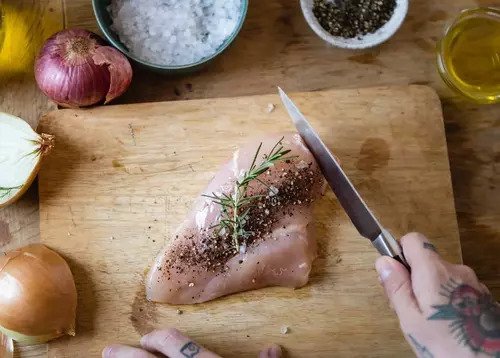
We calculate your protein intake first because it is the most important of the three macronutrients, especially while on a diet.
Here are a couple of nice facts about having a high protein intake:
- People who follow a high protein diet beat lose body fat faster [1]
- Reduced hunger (feeling FULLER – Super important when trying to lose body fat) [2]
- Higher protein diets allow you to preserve more muscle mass when you cut [3]
- The more protein you eat, the more it contributes to muscle mass and strength gains when combined with resistance training. [4]
We can go into the amino acid profile of protein and protein muscle synthesis but for now, let’s just cover the basics of why protein is so crucial.
There are many people who ONLY track their protein intake and calories and let carbs and fat fluctuate on a day to day basis. That’s how important your protein per pound ratio is for your cutting success.
I’m not saying you have to follow an all-protein diet, but you should get the majority of your calories coming from protein, most of the time (there are exceptions).
A good rule of thumb is to eat 0.8-1 gram of protein per pound of body weight, to gain or maintain muscle mass and strength, regardless if you’re trying to lose or gain weight.
Note: It’s important to know that I’m not talking about lean body mass. A lot of recommendations recommend going off lean body mass for protein intake but that requires more math. Also, it’s pretty hard to get a good estimate of lean body mass.
I’ve seen the most success while cutting when my protein intake was high (40% or higher).
Not only did I retain a lot of lean body mass and muscle mass, but also, my strength dipped only a tiny bit as compared to a lot when I didn’t have a high protein intake.
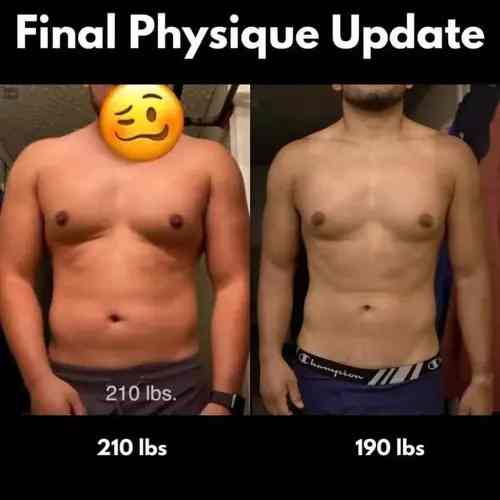
For example, in my cut during 2020, I lost 20 lbs and maintained a bunch of muscle mass and strength.
My bench press was the highest its ever been while in a deficit and my other lifts decreased about 5% compared to 10-15% in cuts prior.
I’m not saying you’re going to see a ton of muscle gain or that your 1RM will increase (it might if you’re a beginner), but the bottom line is that a high-protein diet might give you the best chance to do so.
Protein – 40% (or 0.8-1.2 grams per pound of body weight)
Because we want our protein intake high, we are going to dedicate 40% of our total calories to protein.
Multiply your Calories by 40%.
For example, my numbers would look like this:
2150 Calories x 40% = 860 Calories From Protein
Because there are 4 calories per gram of protein, we divide the number above by 4.
860 Calories / 4 = 215g of Protein
Remember, so long as you get 0.8-1.2 grams of protein per pound of body weight, you should be getting a sufficient amount.
Step 3: Use the Remaining Calories For Carbs & Fat
Next up are fats and carbs.
Now that we have used up 40% of our calories for protein, we need to use the remaining 60% for carbs and fat.
Let’s do that now.
Carbs – 40%

Contrary to popular belief, carbs are not the enemy! You can have a high carbs intake and still succeed in your fitness journey!
So long as we’re in a caloric deficit, we can have a decent amount of carbs and still lose weight.
No need for a low-carb diet if your calories are set up correctly. I actually more carbs than most people when I’m trying to get lean.
For your macronutrients, we want to have a good amount of carbs to promote enough energy for our workouts and daily and weekly activities.
We will use 40% of our remaining 60% for carbs.
No need to do the calculation again as it is the same amount as protein (40% and 40%).
There are 4 calories per gram of carbs (same amount as protein).
215g of Carbs (40%)
Fat – The Remaining 20%
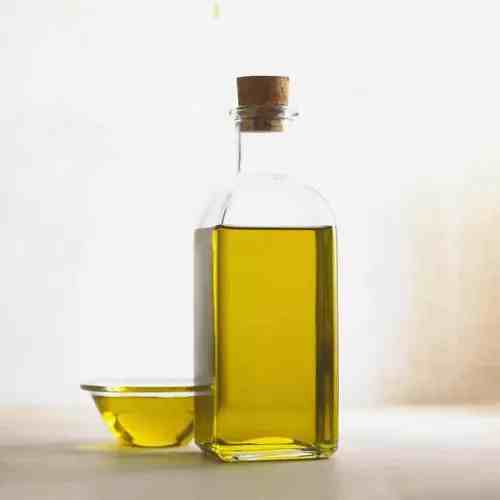
Fat is more than twice the amount of calories than carbs and protein in terms of grams.
That is why we keep your fat intake lower than the rest.
The grams of fat may seem low, but this is how you calculate it:
Multiply your Calories by 20%.
For example, my numbers would look like this:
2150 Calories x 20% = 430 Calories From Fat
There are 9 calories per gram of fat. Therefore, we divide the number above by 9.
430 Calories / 9 = 48g of Fat
Because there are more than double the amount of calories per gram of fat, we reduce our fat intake more so than carbs or protein.
Recap of Our Calculations:
- 2150 calories
To get this, we multiplied my body weight by 14 (because my activity level fits into the sedentary category) to get my calories for maintaining.
Then we took that number (204 x 14 = 2855) and multiplied it by .75 which got us 2150 calories.
- 215 grams of protein
To get this, we multiplied the calorie deficit by 40% (2150 x .40 = 860). To turn this number into grams of protein, we divide it by 4 (860 / 4 = 215).
- 215 grams of carbs
To get this is the same calculation as protein since we used 40% for both.
- 48 grams of fat
To get this, we multiplied the calorie deficit by 20% (2150 x .20 = 430). To turn this number into grams of fat, we divide it by 9 (430 / 9 = 48).
Best Macros For Cutting – 40/40/20 Macro Split
The 40/40/20 macro ratio is great for cutting. 40% of your calories will be from protein, 40% from carbs, and 20% from fat.
This macro percentage split is a very popular macro percentage split among the fitness community.
Why?
Because it’s simple and it works.
Could you tweak the percentages a bit?
Sure.
However, the main thing is to keep your protein high enough to maintain or even build muscle during your cut while keeping fat and carbs medium to low.
NOTE: I’ve been recently experimenting with a different macro ratio that I love. It’s almost a high-carb diet. Actually, it’s a high-carb, medium protein, low-fat diet.
30% from protein, 50% from carbs, 20% from fat.
My body has been responding well to this sort of diet and macro percentage ratio.
Some may think this is WAY too many carbs, but so long as you’re in a deficit, your macro ratio can be however you’d like.
For example, you can keep protein and fat high if you wanted to while keeping carbs low. I don’t recommend it, but you could!
Just remember, keep protein at 0.8g-1g per pound of body weight and you should be fine.
Step 4: Divide Your New Macros Into Meals
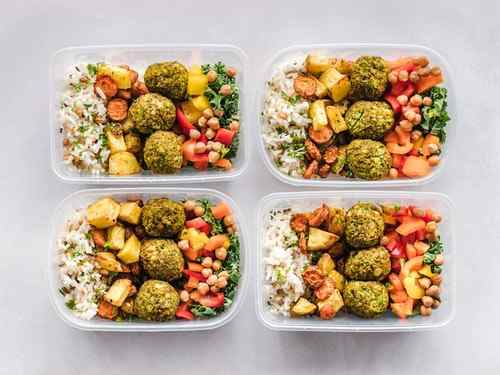
Now that you have your cutting macros, what you want to do is divide them into however many meals you want to have throughout the day. You can choose to meal prep these in advance if you want but it is not required.
For example, if you like to have 4 meals throughout the day, you would just divide your three macro numbers by 4.
Let’s look at some examples.
3 Meals a Day Example
If you like bigger meals and want to have only 3 meals per day, it would look something like this:
|
Meal # |
Protein (215g) |
Carbs (215g) |
Fat (48g) |
|---|---|---|---|
|
1
|
72g | 72g | 16g |
|
2 |
72g | 72g | 16g |
|
3 |
72g | 72g | 16g |
4 Meals a Day Example
|
Meal # |
Protein (215g) |
Carbs (215g) |
Fat (48g) |
|---|---|---|---|
|
1 |
54g | 54g | 12g |
|
2 |
54g | 54g | 12g |
|
3 |
54g | 54g | 12g |
|
4 |
54g | 54g | 12g |
Now that you know how many macros each meal should have, you can begin to create your fat loss meal plan.
As long as your meals fit those macros, you’re going to lose weight because the calories are already set up correctly.
Remember, calories are the main factor that determines whether you lose weight or not.
Macros determine where that weight comes from for the most part.
What About Other Meal Structures?
Look, not every meal is going to be perfectly divided like the tables above show. Even if you meal prep, not every meal will be perfect.
If you like to have 2 big meals per day, DO IT.
If you like to have 1 big meals and 2 medium sized meals, DO IT.
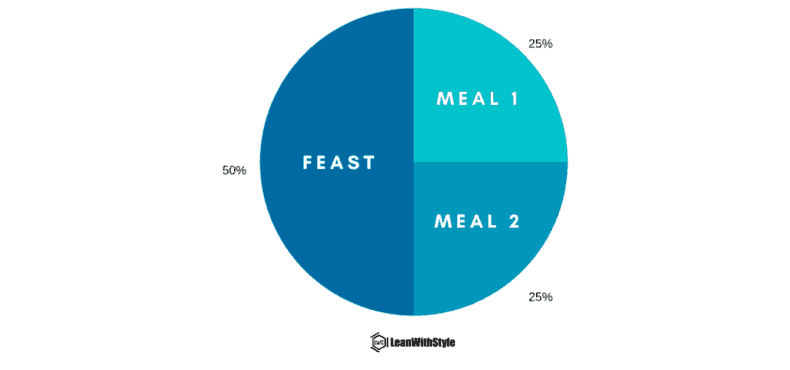
It’s whatever is going to help you stick to your macros that is ultimately going to dictate whether you see success in your fitness journey.
What about macro food sources?
Well, hopefully, this food lists of macros from my macro cheat sheet can help:
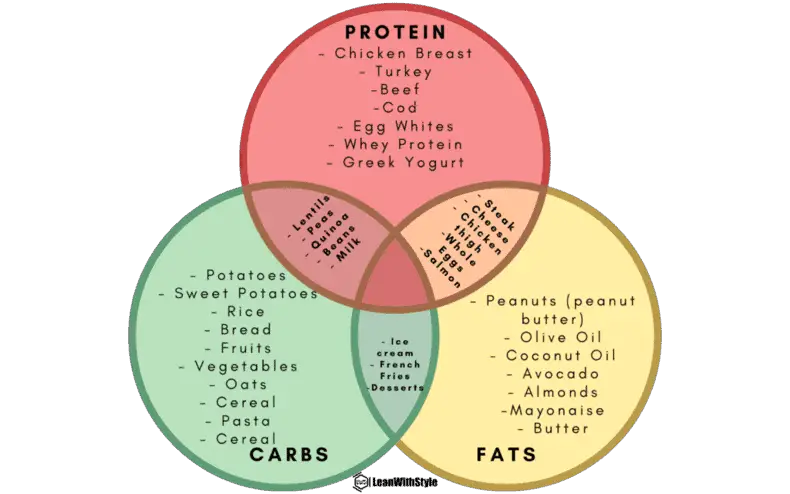
The whole point with this food source list is to help you understand where your macros should come from.
Look, if you get all your carbs and fats from ice cream, and stay under your calories, while also getting enough protein, you’ll lose weight.
Do I recommend that?
FOOK no. But, that example, it’s just to help you understand how important your calorie deficit is.
I believe that 80% of the foods you eat should be “healthy” while 20% should be your “treats.”
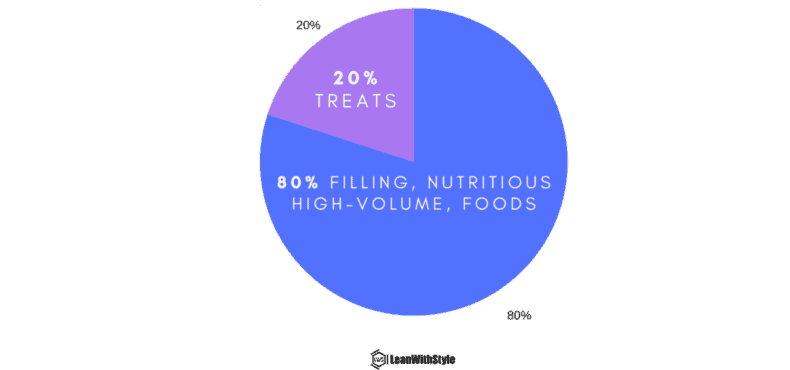
For some, your treats might include peanut butter and Oreos. For others, it might include “fat foods” or simply adding more olive oil.
For your carb sources, some of you might enjoy white rice and brown rice as the ONLY carb sources. Some of you like variety in your diets.
A wise man once said “the best diet is the one you follow.” I 100% agree with that so make sure you find what works best for you.
Step 5: Start Tracking Your New Cutting Macros With MyFitnessPal

Now onto you.
All you have to do now is track your newly calculated macronutrients with a food scale and an app like MyFitnessPal. It has a macros calculator inside. All you do is match up the percentages inside the app with the ones you calculated above (40/40/20).
MyFitnessPal also has a built-in barcode scanner for finding macros for practically any food.
If it doesn’t have a barcode, you can also search for the food.
I go over how to track macros on a food scale and MyFitnessPal here:
Here are all the tools I use and recommend to get started tracking your macronutrients:
Table could not be displayed.Flexible Dieting and IIFYM
Tracking macros and making sure your meals fit your macros is also known as IIFYM.
If you’re not sure how to track macros using MyFitnessPal and a Food Scale, then my book on IIFYM may interest you.
No products found.
You can also purchase it on my website as a PDF.
Step 6 (optional): Invest In a Great Fat Loss Program

The Movie Star Body Program
If you’re just starting on your cutting journey and want a workout program that focuses on getting stronger and getting leaner, then you might be interested in Greg’s new program, Movie Star.
Click here to learn more and see if this program is right for you.
Last update on 2024-04-17 at 12:07 / Affiliate links / Images from Amazon Product Advertising API

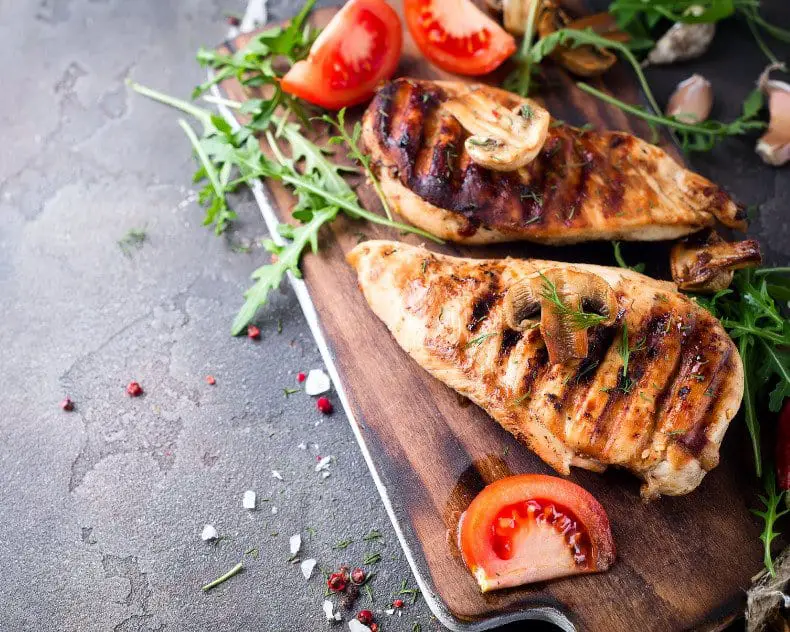


Hey Taras,
There are some who recommend alternating calories on training and rest days and that is entirely up to you.
That being said, I’ve seen the most success with weight loss when everything is kept equally and simple. Also, psychologically speaking, knowing that on some days you can’t eat as much, when you’re already in a deficit, can be a daunting task.
I’d rather keep it all the same and countless others have seen success with this method!
As long as the weekly calories in are the same, alternate daily calories if you wish.
For the macro calculation do you suggest to take the current bodyweight or the desired bodyweight. For example I am 85 kgs and my ideal weight should be 72-74 kgs. Should I calculate macros on 85 kgs or 74 kgs. Please help.
Hi Samuel,
Use your current bodyweight!
Thank you very much for this helpful information.!
Of course! Glad I could help.
Of course! Glad I could help.
How long between your before and after photo? How long until results are expected (definition, muscle growth, fat loss)? Thanks!
Hi Mike,
I’d recommend before and after photos every week or 2 weeks to see physical changes that the scale just won’t show. Depending on how much fat you have to lose, it could be anywhere from 3-6 months or even longer!